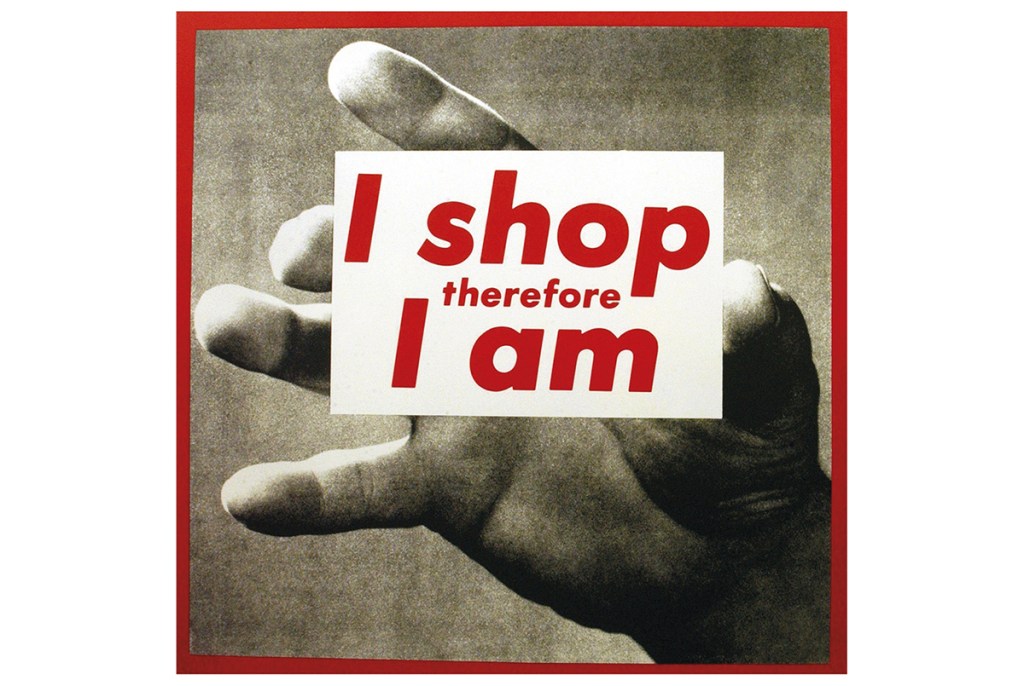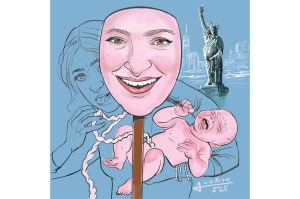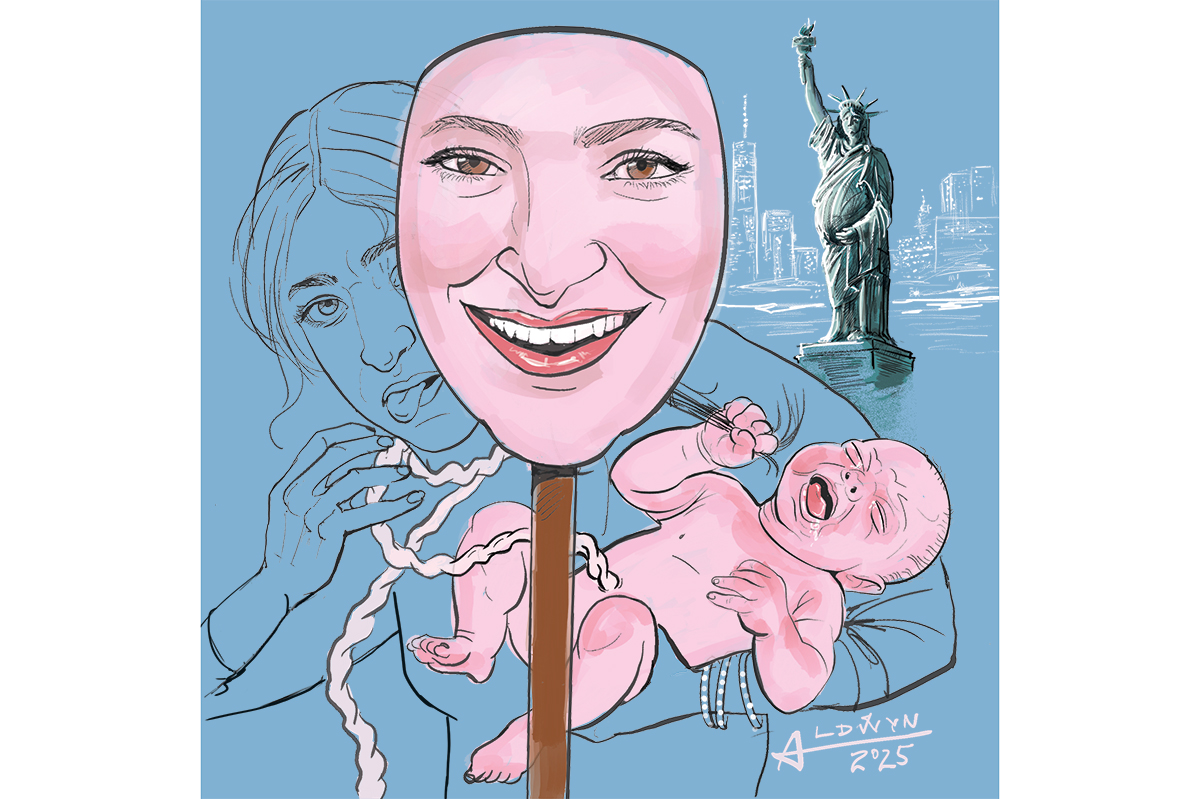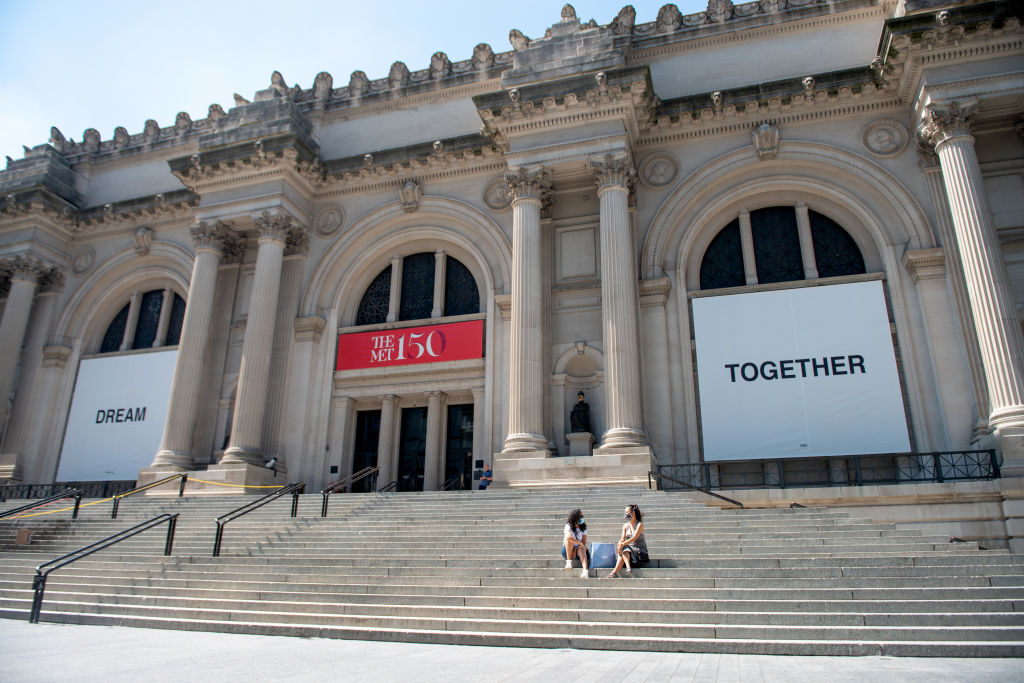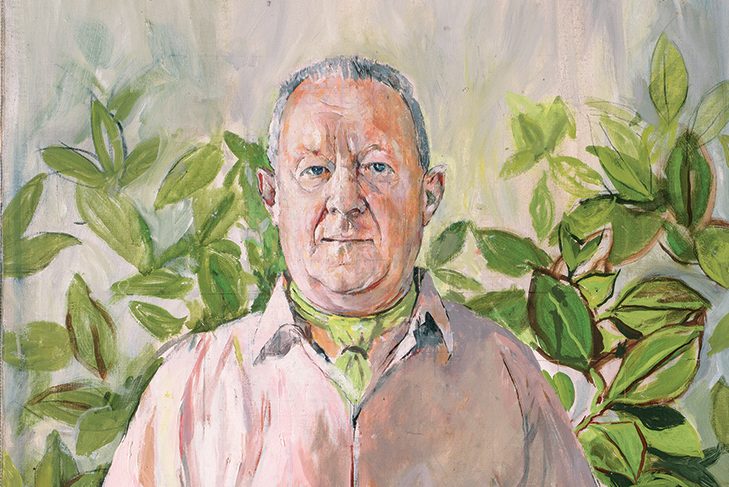A few years ago, the American artist Barbara Kruger covered the facade of Frankfurt’s Kaufhof department store with a pair of huge eyes. It was as if Big Brother had come out of retirement. Above that unsparing gaze was the slogan, in Kruger’s signature Futura bold italic font: ‘You want it. You buy it. You forget it.’
It was a typical work of art by Kruger. She made her career from what’s called culture jamming, subverting media messages by transforming them into their own anti-messages and by indicting the business of capitalism. In 1987, for instance, she took an advertising image of an all-American boy flexing his juvenile biceps before his admiring sister and subverted that message with the overlaid words ‘We don’t need another hero’ for a billboard. The text quoted Tina Turner’s hit of two years earlier to critique, no doubt, not just the patriarchy but also its expression in the American military-industrial complex.
But did she succeed in sticking it to the capitalist man in Frankfurt? Arguably, Kaufhof’s PR people realized what Kruger did not, namely that associating their brand with a hipster artist was good business, making them seem not just cool and tuned-in but ironically knowing in the postmodern manner. It didn’t matter that her message was intended to trash their business model.
Auden suggested that poetry makes nothing happen; anti-capitalist artists go one step further. They want to be rebels in the works but become cogs in the capitalist machine. In 1984 Kruger’s friend Jenny Holzer put up a neon sign over Times Square reading ‘Protect me from what I want’, another seeming denunciation of how capitalism ostensibly shapes our desires. As Holzer’s art became voguish, though, corporations chased her for commissions. In 1999, Holzer was commissioned for the BMW Art Car Project. She wrote ‘Protect Me from what I want’ in metal foil and outlined the slogan with phosphorescent paint on a BMW V12 LMR that was due to race in that year’s 24-hour Le Mans rally.
None has been quite so elegantly ensnared by capitalism as Kruger. In 1994, streetwear brand Supreme appropriated the red-and-white Futura font she had been using. They put it on sneakers, T-shirts, boxing gloves, even bolt cutters. The culture jammer’s critique had itself been jammed.
A decade later something even weirder happened. Feminist clothes designer Leah McSweeney established a line of apparel called Supreme Bitch. It was aimed, she said, at making ‘fun of the misogynistic vibe of Supreme and the boys who wear it’. Supreme Bitch used Supreme’s logo, which they in turn had taken from Kruger (who in turn had appropriated it from a German company called Bauer Type Foundry which created it in 1927).
But Supreme didn’t, as Kruger had, roll over and wave its paws in the air. The company sued McSweeney for $10 million for trademark infringement. Bloody cheek, you might think, given that it had lifted the typeface from Kruger 10 years earlier and capitalized on its association with her cool brand. ‘What a ridiculous clusterfuck of totally uncool jokers,’ commented Kruger at the time. ‘I make my work about this kind of sadly foolish farce. I’m waiting for all of them to sue me for copyright infringement.’ So far nobody has sued her, and Supreme and McSweeney came to an out-of-court settlement in 2013.
Three years ago, though, Kruger took revenge against Supreme. She set up a pop-up shop satirizing the billion-dollar brand by parodying its business model. Supreme ramps up demand for its products by weekly ‘drops’, which mean that those who want to buy, say, a new range of forbiddingly ugly yet apparently desirable sneakers have to line up at 5 a.m. outside its stores.
Kruger’s pop-up shop offered her fans the same experience by opening for a private view and time-limiting their experience once inside the store, as if guests were contestants on Supermarket Sweep. But like those who stood in line for Supreme’s drops, those queuing around the block were lining up to buy merchandise as much as see her work. Art and shopping were scarcely distinguishable. Inside, red-and-white Futura items were for sale, including an embroidered beanie with the phrase ‘Want it Buy it Forget it’ ($40) and T-shirts that read ‘Whose hopes? Whose fears? Whose values? Whose justice?’ ($45). The New Yorker reporter was confused about Kruger’s point. ‘It was hard to tell exactly who was ripping whom.’ The moral? Subversive artists, for all their virtue-signaling, are adept at working the system they overtly despise and skilled at making money from it.
Take Santiago Sierra. The Spanish artist once did a project that involved paying workers to masturbate. At London’s Lisson Gallery, he nailed a corrugated sheet across the entrance so guests arriving for his private view couldn’t get in. ‘My job fails to comply with the decorative and narcotizing functions so much appreciated by the industry,’ Sierra explained to me. ‘Not all of us are Damien Hirst,’ he added.
But, like many artists who affect to be of the anti-Hirst tendency, Sierra isn’t outside the system he claims to despise. On his website, you can buy several of his works, including a digital print of his ‘Economical Study on the Skin of Caracans’, an artwork inspired by Sierra’s discovery of the inverse correlation between the darkness of a person’s skin and their income in Caracas, Venezuela. The result is the photographed naked backs of eight Caracan workers with different skin tones, some scarred and wounded. An edition of 75 has been printed on 188g Hahnemühle Photo Rag bright white paper, 200 x 32 cm, each one signed and numbered. Each copy is on sale through fineartmultiple. com for $805 plus $125 shipping, and, while the blurb says the work ‘tackles the issues of social injustice and exploitation’ it may be just the thing to cheer up a wall in the downstairs bathroom. You can also buy his 2006 ‘Door Plate’, a metal plaque reading: ‘This entrance is strictly prohibited to untidy and smelly people, smokers, alcoholics, drug addicts, blind, deaf, mute or disabled people… beggars, homeless, prostitutes, immigrants… non US citizens, non EU citizens…’ for $11,597. Just the thing to screw to the front door, though you might want to electrically charge it to ward off art thieves and consider your defense against hate-crime charges.
The virtuoso of making money out of nothing is Richard Prince. He exhibited 38 paintings of screenshots of other people’s Instagram photos at the Gagosian in New York in 2014, selling the results for up to $100,000, without crediting their original creators. Some critics called his work ‘genius trolling’. He printed his painting of Ivanka Trump’s selfie having her hair done and sold it to her for $36,000. She then posed in front of it and posted the result on Instagram.
As for Barbara Kruger, she became famous in the late 1980s for her adaptation of René Descartes’s philosophical dictum ‘I think, therefore I am’, transforming it into a new phrase, ‘I shop therefore I am’, and deploying it as a slogan in a range of media. That resonated with the contemporary, consumerist, loadsamoney, greed-is-good neo-liberal era of Reagan and Thatcher.
Today, you can find versions of her shopping bag ‘I shop therefore I am’ both in the collection of New York’s Museum of Modern Art and for sale on eBay. Barbara Kruger’s shopping bag indicting shopping has become a collectible: when I last googled it, a 1990 lithographed bag by Kruger was selling online for $2,150.
A retrospective of Barbara Kruger’s work, Thinking of You. I Mean Me. I Mean You, is at the Art Institute of Chicago until January 24, 2022. This article was originally published in The Spectator’s November 2021 World edition.



